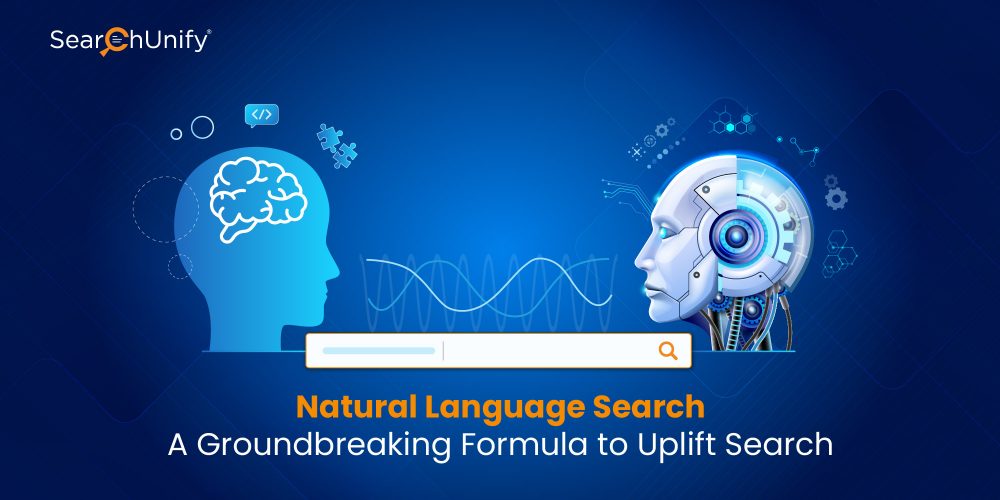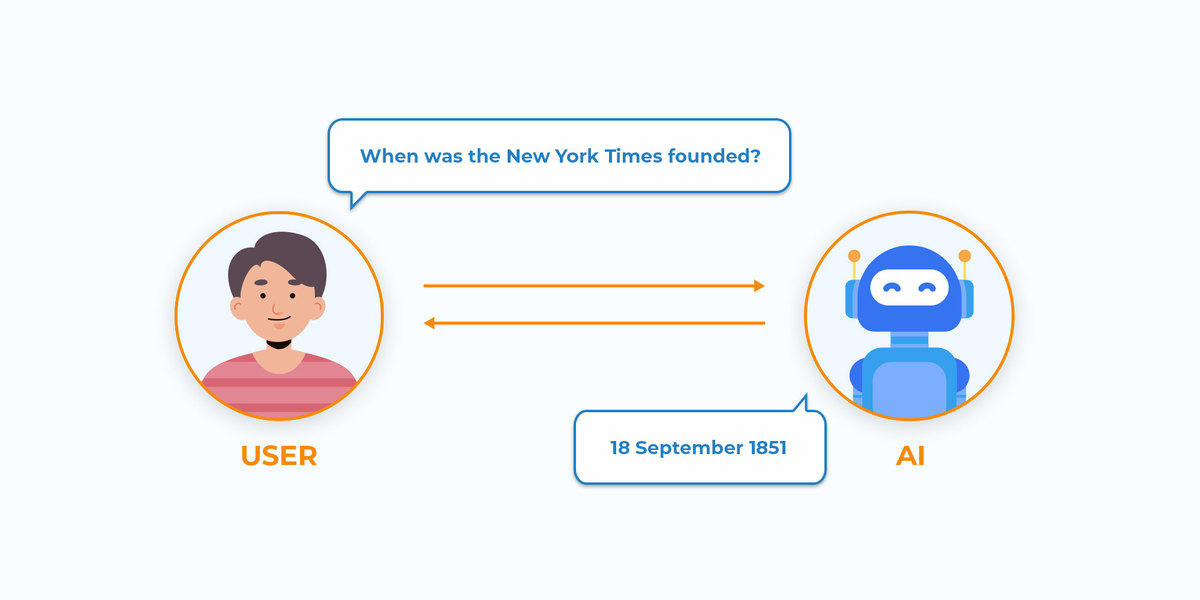
The idea of search becoming a two-way conversation was absolutely nuts in the early days of the internet. Users had to experiment with different keywords to find web pages that met their intent. But not anymore!
With the development of “natural language search,” search engines are beginning to offer a more relevant and personalized experience. You can now run the search or phrase questions in a vernacular, much like you’d ask a friend. Sounds like a lucky break, doesn’t it?
In this blog post, we will learn more about Natural Language Search (NLS), how it works, and explore its various applications that transform the way we search for information online.
First & Foremost – What is Natural Language Search?
Natural Language Search is a search query phrased in vernacular or everyday language rather than basic keywords.
For example, if you want to know how high Mount Elbert is, you’d rather ask a simple question: “How high is Mount Elbert.”
Whether you type into a search box, use voice search, or ask virtual assistants like digital assistants like Siri, Cortana, or Alexa, the conversational search is instantly transformed into a machine-readable search query.
The result? You get faster and more effective answers in line with your intent.

Natural Language Search vs Keyword Search
Traditionally, search engines ran a search by matching the keyword against its index, known as keyword-based search. In short, it is a method of breaking down the query into important terms, dominating the web since the advent of search engines in the 1990s.
However, there are certain challenges with this paradigm. Often, words that are spelled the same have multiple meanings, so keyword searches fail to deliver pertinent results. For instance, if you search for the term “CSM,” you might not only find the results for “Customer Success Manager” but also for “Certified Scrum Master.”
Natural Language Search, on the other hand, provides results that are true to form: exactly what the users are searching for. It understands users’ intent and complex, multi-part queries, resulting in more contextual responses. Impressive, right?
Why Does Natural Language Search Matter?
It’s hard for search engines to understand human language and deal with the intrinsic ambiguity of words. The answer to this problem is NLP search.
NLP search engines combine machine learning and Natural Language Understanding (NLU) to dissect, interpret, and manipulate human language in both text and speech forms. Let’s find out how:
1. Intent Detection
Search intent is the end goal of a user when conducting a specific search: it could be to find a particular website, learn, or purchase something. NLP-powered search leverages translation, text summarization, speech recognition, topic segmentation, semantic analysis, etc., to discern the user intent, showing more relevant search results on the top.
2. Synonym Detection
End users don’t always use the specific keyword. They can run an alternative search query or use its variation. Irrespective of the exact search term, users expect accurate results to turn up.
NLP search engine extracts a set of synonyms out of the cleaned-up user query and processes them to filter irrelevant words. From the similar queries “apple mac charger” and “mac power,” it deduces that “charger” and “power” are synonyms because they both follow “mac,” resulting in the same set of results.
How Does Natural Language Search Work?
Search engines use an advanced mechanism called Natural Language Processing (NLP) to make the search more intelligent and semantic. It is a component of AI that decodes human language to machine language so systems can understand what users are searching for.
NLP harnesses multiple techniques to identify the search topic rather than the keyword. These include:
Parsing
Parsing is breaking down the sentence into its component parts to make the meaning explicit. It is important because it analyzes strings of symbols in natural language holding to formal grammar rules.
Stemming
Stemming refers to extracting the base form of words by eliminating affixes from them. For example, when you search ‘retrieval’, you may also get the results for ‘retrieved’ and ‘retrieves’. Here, the stem is ‘retrieve.’
It improves the capability of natural language search engines to recognize the form of a word and return search results that otherwise might have been missed.
Lemmatization
Lemmatization is reducing the word to its canonical or dictionary form. For example, to lemmatize the word, “studies” means taking away the suffixes “ies” to bring out the root word “study.”
It is a more accurate and calculated process as it takes into consideration the context of every word and displays the best possible results.
[ALSO READ: How Stemming & Lemmatization Supercharges Enterprise Search for Contextual Information Retrieval]
Want to Leverage Natural Language Search to Elevate Your CX?
Natural Language Search has had a revolutionary impact in the realm of search. It has tackled the barrier to information and made search engines more competent in delivering faster and more accurate results.
If you’re in the support sector, utilizing NLP-powered search can help you understand the silent voice of your customers. Are you wondering how? We would recommend taking a look at this ebook. It discusses the premium applications of NLP and how it goes a long way in improving support outcomes.


















